Have you ever asked the question, “What do aphids eat?” This article puts that question to rest and explores the feeding habit of aphids and a few unlikely symbiotic relationships.
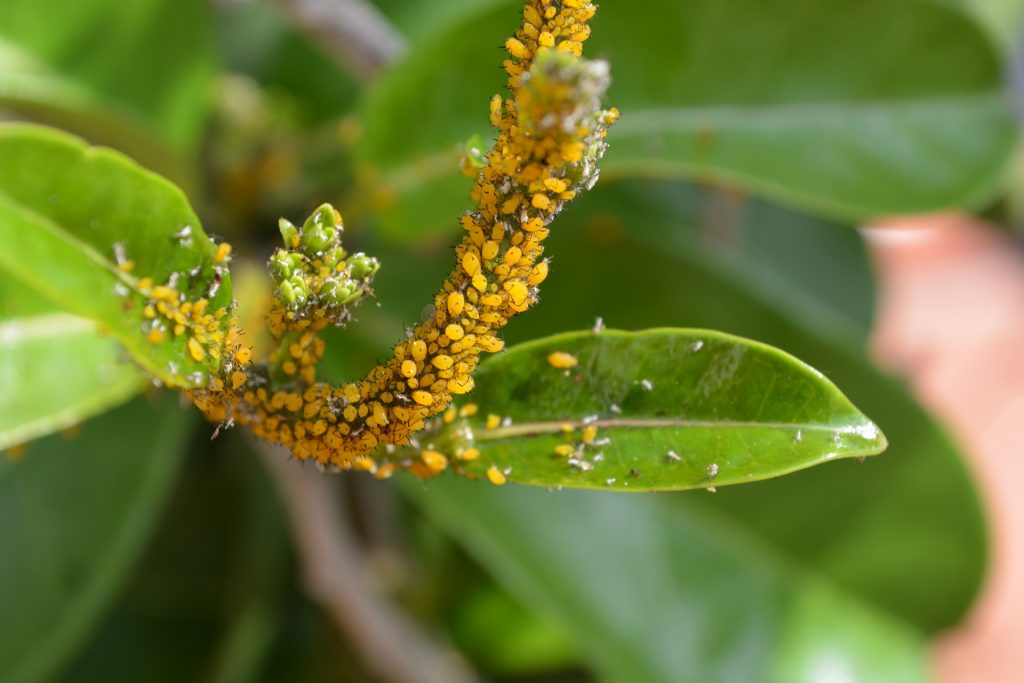
You often have to deal with an aphid infestation throughout your garden. They differ in types, but they all make up the same family, Aphididae.
These tiny, almost inconspicuous plant lice appear in different colours, some winged and wingless, immature and developed.
There’s plenty to learn about plant lice, but one lingering question you need cleared up is: What do aphids eat?
That’s an easy answer, but let’s consider in dept the eating habits of aphids and how it affects your garden.
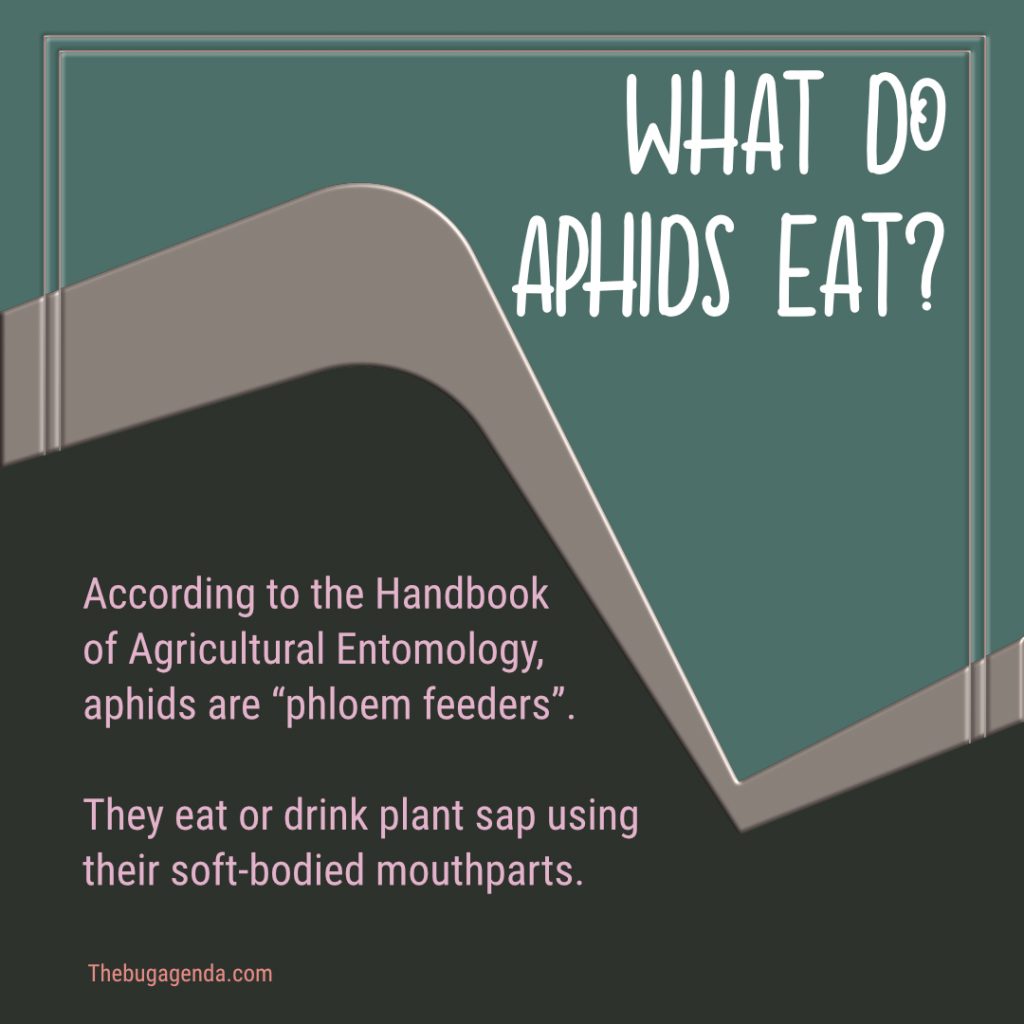
What Do Aphids Eat and Drink?
According to the Handbook of Agricultural Entomology, aphids are “phloem feeders”. Phloem is a tube-shaped structure that distributes nutrients or synthesized food throughout a plant.
It’s through this structure aphids can eat or drink plant sap using their soft-bodied, tiny mouthparts. Since the ‘what do aphids eat’ question has been answered, let’s look at why aphids eat plant sap.
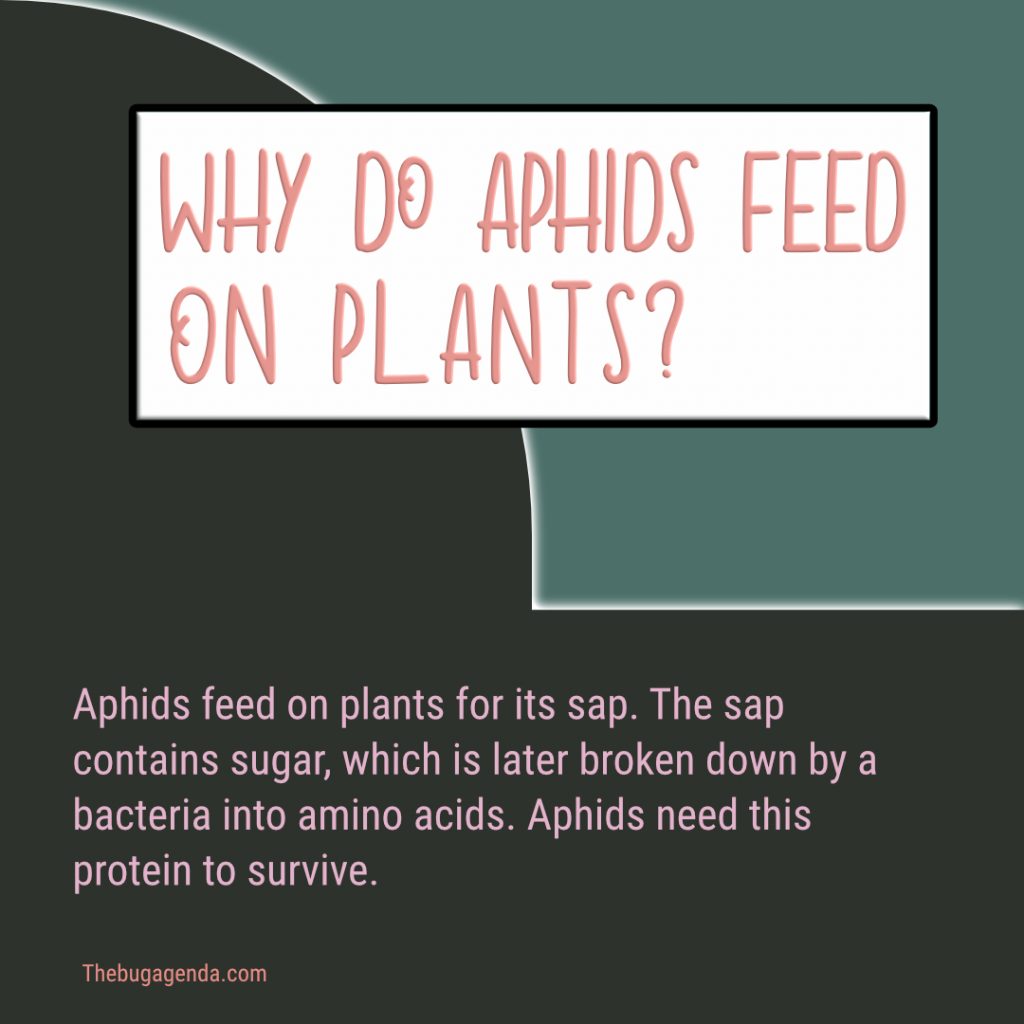
Why Do Aphids Eat Plant Sap?
Think about your body for a moment. You eat to survive, don’t you? Giving your body all the necessary nutrients is paramount for sharp functioning of various body systems. Without proper nutritious meals, you’d become feeble and, if left to run its course, things could be fatal.
In the same way, aphids eat to survive. Plant sap is rife with sugar, but it lacks the amino acids aphids need to grow into even more formidable plant menaces. To compensate for this deficiency, aphids consume plant sap in astronomical portions to imbibe sugar, just to get sufficient protein.
Excess or unused sugar from plant sap is safely snugged away in the aphid’s widening rectum to be used later.
What aphids do next with the sugary substance they extract from plant sap is even more repulsing, at least to us humans. Before we delve into that, however, let’s talk more about how plant sap is used by aphids.
As obvious, we have deviated a bit from the initial question raised (what do aphids eat?) but everything explained in this article is relevant to an aphid’s eating habit.
What Do Aphids Do with Plant Sap?
For us humans, gorging on junk food around the clock would likely kill us (all jokes aside). But, what this junk food diet does for aphids will leave you amazed.
How do aphids eat an endless supply of junk food from plant sap and not keel over? Bacteria! Yes, you heard right. Aphids have bacteria as consorts. This unlikely relationship with Buchnera aphidicola, cooperates in a dependent relationship to give aphids the amino acids they need.
Plant sap is limited in the nitrogenous compound aphids require to thrive. The amino acids aspartate, asparagine, glutamine, and glutamate aren’t sufficient for aphids. Hence, the Buchnera aphidicola bacteria that lives within them helps them build the other amino acids they awfully lack.
Would you believe that once plant sap is taken up by an aphid, it’s completely broken down and reconstructed? Absolutely mind-boggling! If mere humans could eat plenty of sugar, and then use said substance to reconstruct all the nutrients we need, can you imagine what world we’d live in and how much sugar we’d consume daily?
Are you interested in reading more about this strange relationship between aphids and bacteria? Find the research paper here.
While we’re on the subject of relationships, let’s talk about another strange, symbiotic friendship that serves aphids.
By the way, if you’re still wondering ‘what do aphids eat’, it’s junk food –pure sugar from plant sap.
The Ant Cow and the Bottom Feeder
The ant cow and bottom feeder? This article is getting stranger by the minute, don’t you think? It’s necessary and, sure enough, you are learning quite a bit about aphids and what they eat since you’ve started reading. So why not continue to enjoy the journey?
Since aphids eat so much plant sap, how do they discharge the excess sugar? The answer isn’t surprising. Aphids eliminate this sugary substance through the anus, the same way we do.
If you’re one to encounter a plethora of sap-sucking aphids in your garden, it’s not uncommon to behold strings of ants queued up behind them. This is because aphids are “ant cows”. Just to evoke a vivid image, think about a human milking a cow. That act is synonymous to how aphids are treated by ants.
Do you think it’s possible to get rid of aphids permanently? Click the link to learn more.
How to Get Rid of Aphids Permanently – The Bug Agenda
Aphids are “attended” by ants. Not all aphids are attended by ants, so let’s stick to the ant-loving ones. Ant-loving aphids do not develop physically to put up a defence when ants come around, as they feel protected.
Ants are aggressive predators, so why don’t they attack aphids? Let’s go back to the cow-milking analogy. Ants ‘milk’ aphids for the sugary substance they secrete from the anus. In exchange, these bottom feeders protect their food source by fighting off natural aphid predators.
Talk about mutualism! Aphids get the protection they need from emerging threats, while ants feed to their heart’s content. To get this sugary substance (honeydew), an ant would caress the back of an aphid’s abdomen to initiate a release.
More blog posts will be written about the symbiotic relationship between aphids and ants, so watch this space. If you’re also interested in learning more about ants, possibly facts you didn’t know, please give this article a read.
Are you still following? Let’s recap. We’ve covered the elephant in the room: what do aphids eat. Exploration was also made of how aphids use plant sap to get vital proteins, how they survive despite eating a junk diet, and the odd relationship they share with ants.
With so much sap extracted from plants through the feasting process, you might be wondering how they are affected. Let’s consider what negative consequences an aphid’s feeding habit has on plants.
If you have an aphid infestation problem at home, you may be interested in exploring chemical control methods, should other options prove futile.
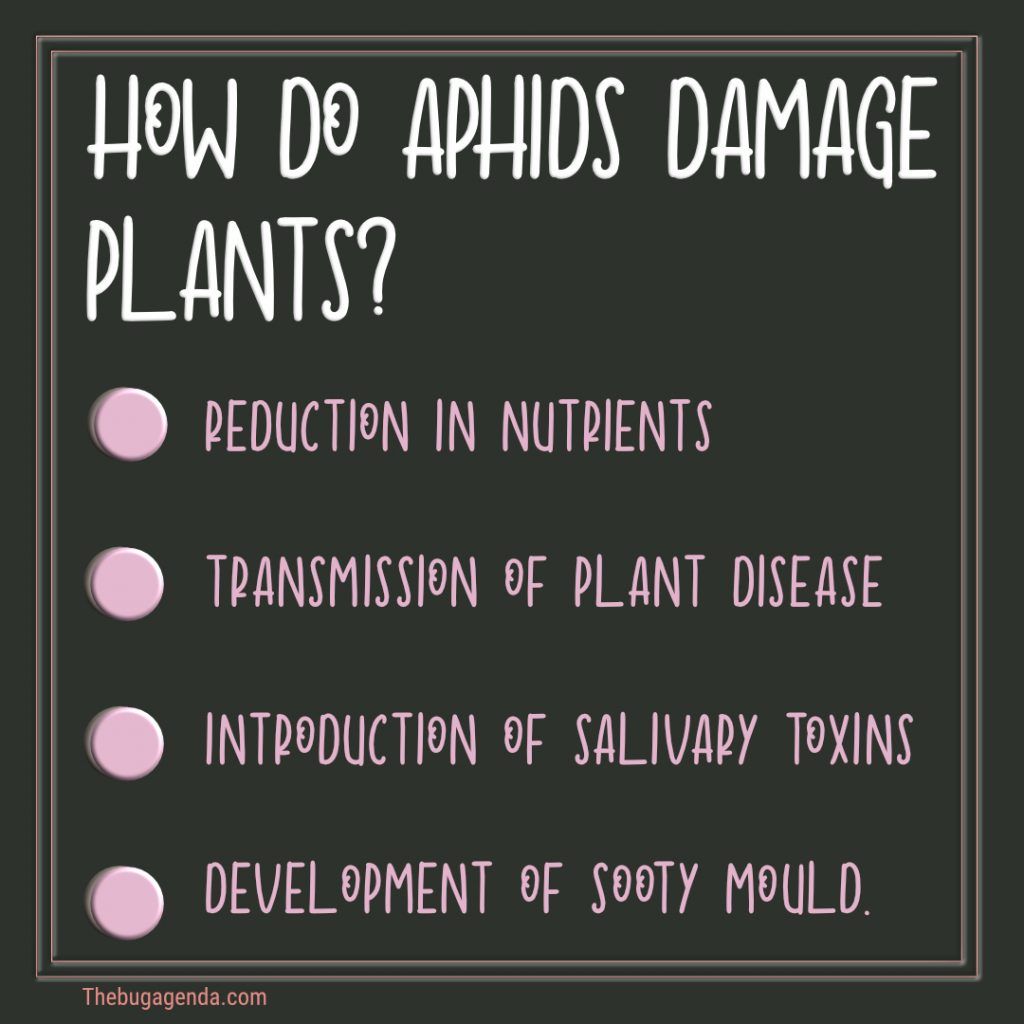
How Do Aphids Affect/Damage Plants?
A plant with a light infestation will likely bounce back. However, a severe infestation can prove damaging for plants. The pointers below highlight how aphids affect plants.
1. Reduction in Nutrients
Since plants are having their saps sucked, there won’t be sufficient nutrients to ensure the plant sprout as it ought to. As a consequence, the plant’s growth will be stunted, leaf production diminished, and an untimely, early death. If the plant doesn’t die, it’ll likely look like a malnourished stick swaying in the wind.
2. Transmission of Disease
Some aphids are vectors of plant diseases. As an aphid sticks its tiny, soft mouthpart into your plant in search of sap, it can transmit a virus. This is the most damaging effect aphids have on plants.
While many plants do survive after an infestation, once a virus is transmitted, it’s likely that crop yield will suffer. As aphids transmit pathogens in different ways, an infected plant, when fed on by an aphid, transmits the vector to the aphid. This ‘diseased’ aphid will become a host for life and transmit the virus to other plants in your garden. Stop this perpetuating cycle and learn how to kill aphids with soapy water.
3. Toxic Saliva
Some aphids have salivary toxins. These toxins affect a plant directly around feeding areas. This toxin is evident with the yellowing of plant tissue and curling of leaves.
4. Development of Sooty Mould
The honeydew released from aphids pulls in saprophytic sooty-mold fungi. This black mold is unpleasant to behold and it ages affected plants. If you do produce crops for sale (or even to care for your family) this should be of concern.
Sooty mold leaves your crops unattractive to customers. If your crops do become affected, consider it a loss.
How to Prevent Aphids from Feeding on Your Plants
It’s impossible to keep aphids at bay or out of your garden for good. If this were to be achieved, you’d have to keep all your plants under protective covers. Tackling aphids require consistent effort. It’s not something you pick up today and drop like hot potatoes tomorrow. It’s important to work at it.
If you do own an organic garden and wish to explore options, consider learning about organic aphid control interventions that can benefit your garden.
Are you looking for more ways to deal with aphids in your garden? Have you ever tried a garlic aphid spray? Research shows that garlic extract repels aphids from your garden, and at the same time attracts predatory insects of aphids like lady beetles and lacewings.
Share the Love
If you’ve enjoyed reading this article what do aphids eat and found it beneficial to your situation, don’t forget to share.
Sharing our content with friends and family helps to keep the lights going so that we can continue to help you deal with simple and serious pest problems at home. As usual, we welcome any questions you may have. Please make use of the comments section below.




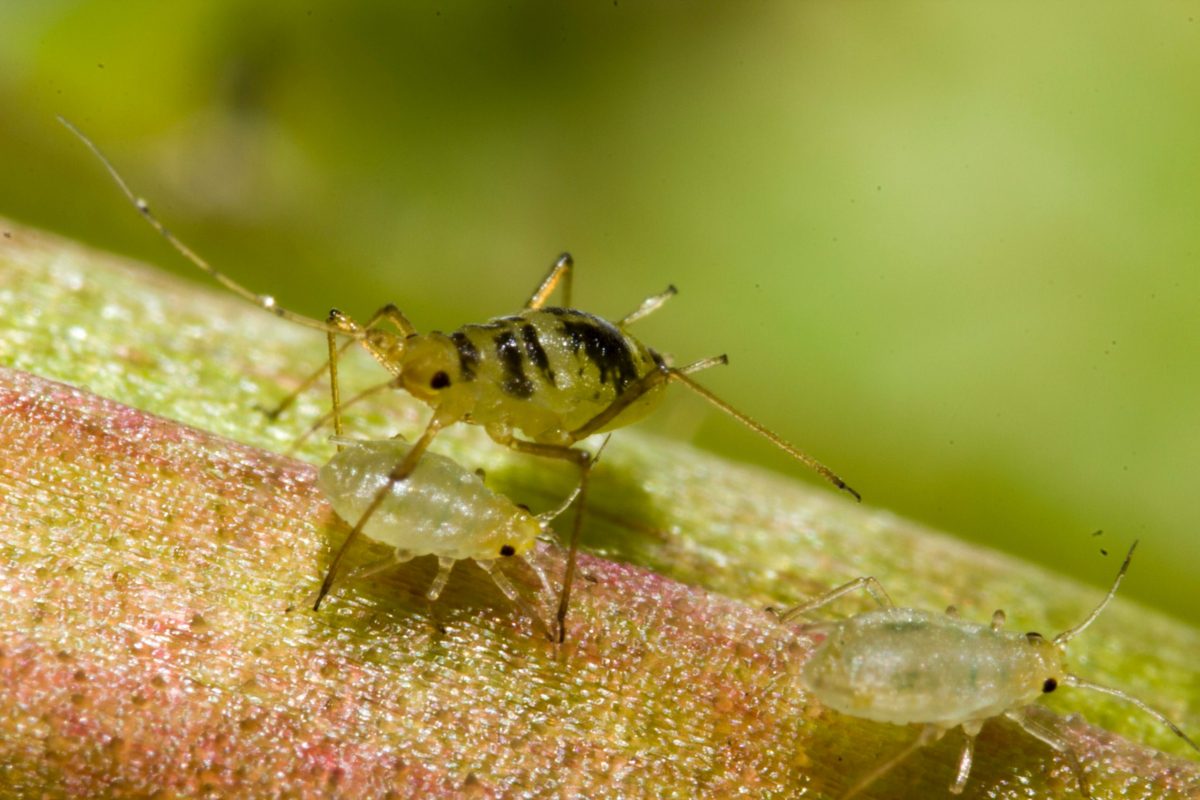

I have been scouring the web for more information about the aphid – invasive ant connection and found new and useful information here leading me to believe that the more sugar content a plant has the more aphids it can support. FYI, a recent field study in Texas showed that the RIFA colonies with access to aphids showed approximately 20% more growth than those that did not, even with the same amount of other foods.
Wonderful and insightful information. Thank you for adding that bit of detail. Appreciate it!